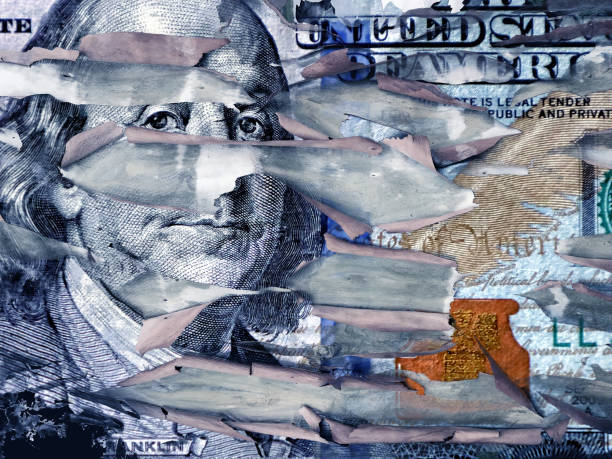 The phenomenon of overextended personal debt is not merely a financial condition but a complex web of interconnected core concepts that trap individuals in a cycle of anxiety and limitation. At its heart lies a fundamental mismatch: the chronic disparity between income and expenses. When lifestyle aspirations or essential costs consistently outpace earnings, credit becomes the bridge across that gap. This reliance on borrowed capital, while a temporary salve, initiates a dangerous shift from managing cash flow to servicing perpetual liabilities, where the focus is no longer on living but on surviving the next payment.Two pivotal concepts compound this problem: compound interest and depreciation. Compound interest, often called a powerful ally for savers, becomes a ruthless adversary for borrowers. It causes debt to grow exponentially, meaning minimum payments primarily cover accumulating interest rather than reducing the principal balance, effectively trapping the debtor. This is tragically amplified when financing depreciating assets, most notably automobiles. Here, one borrows at high interest for an object whose value plummets the moment it is acquired, often leading to negative equity—owing more than the asset is worth—which severely limits financial flexibility.The psychological drivers, such as keeping up with societal expectations or engaging in conspicuous consumption, further deepen the trap. The desire to signal status or maintain a perceived standard of living can rationalize financially unsustainable decisions, using debt to fabricate an image of prosperity that income cannot support. This fragile illusion inevitably shatters when an inevitable emergency arises—a medical issue, car repair, or job loss—revealing a complete lack of safety net and pushing the debt load from manageable to catastrophic.Ultimately, these core concepts converge to create a state of profound financial fragility. Overextension steals from the future, as resources that should fund retirement savings or wealth-building are diverted to service past consumption. It transforms income into a prize for creditors before it ever reaches the individual’s pocket, eroding freedom and limiting life choices. Understanding these foundational elements—the income-expense gap, the mechanics of interest, and the psychology of spending—is crucial, for it is within this interplay that the path to financial distress is paved, and the difficult road to recovery must begin.
The phenomenon of overextended personal debt is not merely a financial condition but a complex web of interconnected core concepts that trap individuals in a cycle of anxiety and limitation. At its heart lies a fundamental mismatch: the chronic disparity between income and expenses. When lifestyle aspirations or essential costs consistently outpace earnings, credit becomes the bridge across that gap. This reliance on borrowed capital, while a temporary salve, initiates a dangerous shift from managing cash flow to servicing perpetual liabilities, where the focus is no longer on living but on surviving the next payment.Two pivotal concepts compound this problem: compound interest and depreciation. Compound interest, often called a powerful ally for savers, becomes a ruthless adversary for borrowers. It causes debt to grow exponentially, meaning minimum payments primarily cover accumulating interest rather than reducing the principal balance, effectively trapping the debtor. This is tragically amplified when financing depreciating assets, most notably automobiles. Here, one borrows at high interest for an object whose value plummets the moment it is acquired, often leading to negative equity—owing more than the asset is worth—which severely limits financial flexibility.The psychological drivers, such as keeping up with societal expectations or engaging in conspicuous consumption, further deepen the trap. The desire to signal status or maintain a perceived standard of living can rationalize financially unsustainable decisions, using debt to fabricate an image of prosperity that income cannot support. This fragile illusion inevitably shatters when an inevitable emergency arises—a medical issue, car repair, or job loss—revealing a complete lack of safety net and pushing the debt load from manageable to catastrophic.Ultimately, these core concepts converge to create a state of profound financial fragility. Overextension steals from the future, as resources that should fund retirement savings or wealth-building are diverted to service past consumption. It transforms income into a prize for creditors before it ever reaches the individual’s pocket, eroding freedom and limiting life choices. Understanding these foundational elements—the income-expense gap, the mechanics of interest, and the psychology of spending—is crucial, for it is within this interplay that the path to financial distress is paved, and the difficult road to recovery must begin.
Yes, medical debt is typically dischargeable in Chapter 7 or Chapter 13 bankruptcy, but this should be a last resort due to long-term credit impacts.
It locks you into a higher cost of living. You become dependent on your current income level to maintain your lifestyle, making it difficult to take career risks, start a business, or weather a job loss without severe financial strain.
Nonprofit credit counselors, patient advocacy groups, and legal aid organizations can help negotiate bills, navigate financial assistance, and address collections issues.
A cash advance allows you to withdraw cash from an ATM or bank using your credit card. It immediately accrues interest at a much higher APR than purchases, has no grace period, and often includes an additional transaction fee, making it an extremely expensive form of debt.
Mediation is often cheaper and faster than litigation, reducing legal fees and helping preserve resources that might otherwise be spent on protracted court battles.